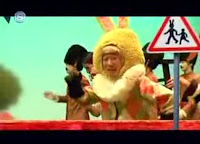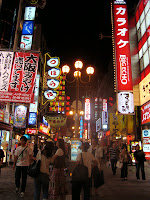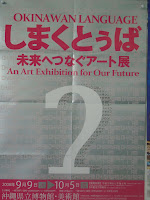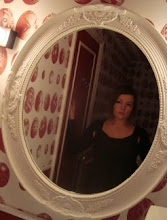 I left Japan from Nagoya, the cheapest gateway to Australia. The shinkansen ride there got a bit exhausting, not having been able to secure a reserved seat, I ended up standing in the corridor for 2 hours. Nagoya airport was nice enough though for a last coffee and goodbye calls to my friends in Japan.
I left Japan from Nagoya, the cheapest gateway to Australia. The shinkansen ride there got a bit exhausting, not having been able to secure a reserved seat, I ended up standing in the corridor for 2 hours. Nagoya airport was nice enough though for a last coffee and goodbye calls to my friends in Japan.JetStar is Quantas low-cost subsidiary and is flying from Nagoya to various destinations in Australia. I had opted for Cairns, for a taste of tropical Northern Oz. The flight was an uneventful 6-hours and brought me from chilly Japan to warm and sunny Australia.
I spent the 2 days in Cairns relaxing mostly. Cairns is a pleasant, smaller town with a distinct tourist character. I stayed in a budget hostel right on the beachfront which is made up of numerous restaurants, tour operator offices and budget accomodation to suit backpackers tastes.
 dget as well. So I explored the vicinity of Cairns by public bus and spent some time relaxing on the beach in Palm Cove. I met a guy who used to live in Japan as well, Tom and we cooked some Japanese curry together and went for a dip in Cairn's public swimming pool on the Esplanade late at night which resulted in being told off by the security guards. I also enjoyed some hearty Aussie meals and noticed how much bigger portions are in that part of the world compared to Japan (also more expensive).
dget as well. So I explored the vicinity of Cairns by public bus and spent some time relaxing on the beach in Palm Cove. I met a guy who used to live in Japan as well, Tom and we cooked some Japanese curry together and went for a dip in Cairn's public swimming pool on the Esplanade late at night which resulted in being told off by the security guards. I also enjoyed some hearty Aussie meals and noticed how much bigger portions are in that part of the world compared to Japan (also more expensive).After this short 2-day glance I headed off to Kiwiland via Brisbane to Christchurch with Virgin Blue, one of the regional low-cost carriers. I'll be back in Australia in late November.
















































